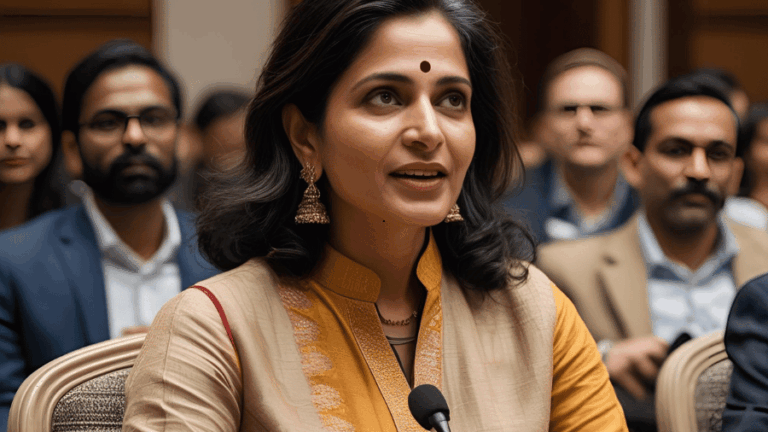Feeding Tomorrow: The Future of Food, Farming, and Climate-Resilient Agriculture

In 2025, the conversation around food is no longer limited to organic labels or nutrition fads. It’s a global dialogue about climate resilience, food security, biodiversity, and survival. As climate change continues to disrupt traditional agriculture, floods and droughts destroy harvests, and population growth pressures land use, the question we face is no longer just how to feed people — it’s how to feed the future. The future of food and agriculture is not being built in distant decades. It is being designed now — in labs, rooftops, rural villages, and city centers.
One of the most striking innovations in this movement is vertical farming. These multi-level indoor farms use hydroponics or aeroponics to grow vegetables without soil, sunlight, or chemical pesticides. Controlled lighting, temperature, and nutrient systems allow leafy greens, herbs, and even strawberries to flourish in urban environments — including basements, skyscrapers, and shipping containers. Cities like Singapore, Dubai, and Tokyo have embraced vertical farms as a way to reduce dependency on food imports and secure year-round fresh produce supply.
Startups such as AeroFarms and Plenty have scaled these operations globally. By using up to 95% less water than traditional farming and zero harmful runoff, vertical farming has become a sustainable solution to agricultural water stress. These facilities also eliminate the need for long-haul transport, reducing emissions and offering food closer to the point of consumption. In a world where 30% of food is lost in supply chains, this is a significant leap.
However, the transformation doesn’t stop with structure. It’s also happening at the genetic and cellular level. Lab-grown meat, also called cultivated meat, has moved from concept to market-ready. In 2023, the United States and Israel gave regulatory approval to several cultivated chicken and beef products. In 2025, upscale restaurants and supermarkets in over 10 countries now stock cultivated meat — made from real animal cells but without slaughter or intensive land use.
This innovation could drastically reduce methane emissions, water usage, and deforestation associated with livestock farming. And as the technology scales, companies like GOOD Meat and Upside Foods aim to make these alternatives affordable for middle- and low-income markets. The social impact is just as profound as the environmental one. Lab-grown meat challenges long-standing ethical debates while reshaping culinary culture.
Equally revolutionary is the rise of climate-smart agriculture in traditional rural settings. This approach uses data, indigenous knowledge, and tech tools to optimize yields while protecting ecosystems. In Africa, Asia, and Latin America, farmers are increasingly turning to crop rotation, agroforestry, no-till farming, and cover crops to improve soil health and capture carbon. Drought-resistant seeds and AI-powered weather forecasts help smallholder farmers better prepare for extreme climate patterns.
In India, the government’s eNAM (National Agriculture Market) initiative has connected thousands of rural farmers to digital trading platforms. This enables fair pricing, reduces exploitation, and opens up new markets for organic, fair-trade, and regionally sourced produce. Combined with solar irrigation pumps and biofertilizers, such policies are creating a new era of regenerative agriculture that restores rather than depletes the land.
The future of food and agriculture also involves how we perceive and experience food. In global cities, alternative proteins made from insects, algae, and fungi are entering gourmet menus and protein bars. Not only are they high in nutrition, but they also have an environmental footprint significantly smaller than beef or soy. Startups in Thailand, Mexico, and South Korea are leading the way with products that blend local culinary traditions and futuristic protein sources.
Consumer behavior is changing too. The average urban household in 2025 is more conscious of food waste, carbon footprint, and ingredient traceability. Smart fridges track expiry dates and suggest recipes. QR codes on packaging show supply chain information, including the carbon offset per unit. This push toward transparency is forcing corporations to rethink how they source, produce, and package food.
Educational institutions and social enterprises are playing a critical role in bridging the knowledge gap. Programs that teach urban gardening, composting, and community-supported agriculture (CSA) are expanding in schools and neighborhoods. Cities like Copenhagen and San Francisco now offer tax credits to citizens who grow their own vegetables or participate in local food co-ops.
In the corporate world, agribusiness giants are investing heavily in AI, blockchain, and robotics. Precision agriculture uses drones to monitor plant health, autonomous tractors to optimize seeding, and blockchain to authenticate organic or fair-trade claims. This tech-led transformation ensures higher yields with lower environmental impact, while also addressing fraud and labor abuses across global food chains.
Yet despite all these advancements, global hunger remains a critical challenge. According to the World Food Programme, over 700 million people still face food insecurity in 2025. This includes war-torn regions, climate-displaced populations, and low-income communities in rich countries. To address this, humanitarian organizations are using digital food vouchers linked to mobile IDs, allowing refugees to purchase fresh food from local vendors instead of depending on rations. These solutions empower recipients while supporting local economies.
Importantly, the future of food is also about inclusivity and equity. Women play a central role in global agriculture, especially in developing regions. Yet they have less access to land, credit, and training. In 2025, there’s a growing movement to correct this imbalance. Initiatives like UN Women’s “We Empower” and local cooperatives in Kenya, Bangladesh, and Colombia are ensuring women farmers gain equal access to resources and markets. Female-led agri-tech startups are not only innovating but also hiring and training rural women as agri-entrepreneurs.
Young people are equally vital. Across Europe and Africa, youth-led projects are using storytelling, film, and gamified apps to revive interest in agriculture — transforming it from a laborious tradition to a high-tech career path. This rejuvenation is critical for long-term food security, as the average age of a farmer in many countries continues to rise.
As with any transformation, challenges persist — from regulatory hurdles and infrastructure gaps to cultural resistance and affordability. But the visionary shift in how we grow, distribute, and experience food is unstoppable. Governments, communities, startups, and even home cooks are participating in this journey.
For readers of The Visionary Spark, the question is not whether food innovation will affect you — but how you can be part of it. Whether you support local farming, invest in sustainable food startups, or just grow herbs on your windowsill, your choices are part of the collective solution.
We encourage you to explore resources like FAO’s Climate-Smart Agriculture Guide and the EAT Foundation to understand more about the global food transformation. You can also revisit our past profiles on women-led regenerative farms and AI-based food startups in the Visionary Voices section.
In a world where the population is expected to reach 10 billion by 2050, the ability to feed everyone sustainably, nutritiously, and ethically may be the most defining challenge of our time. And as we’re learning in 2025, that future isn’t far off — it’s already on our plate.





